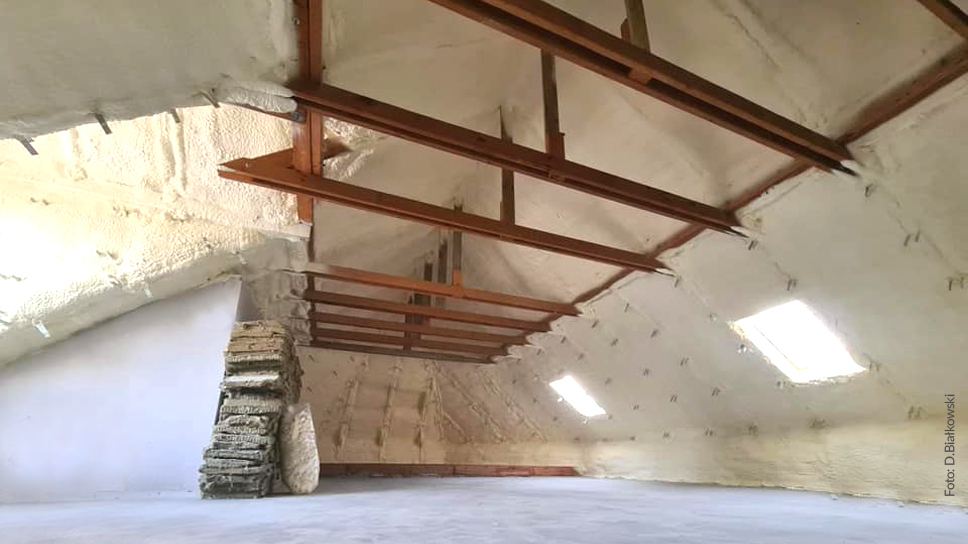What is the best way to insulate a timber ceiling?
There are various methods of insulating a wooden ceiling. One popular solution is to install mineral wool, but this material tends to absorb moisture. Is there a better solution? Currently, polyurethane foam is gaining popularity as it is perfect for insulating wooden surfaces.
Foam insulation of wooden ceilings is a perfect solution for people who value durability and effectiveness of the solution. The thermal insulator does not lose its properties over the years and protects the interior against heat loss unaltered. It creates a uniform protective layer of high efficiency.
What are the benefits of insulating a wooden ceiling with PUR foam?
Insulation of wooden ceiling is a permanent solution, whose parameters will not change over the years. PUR foam tightly fills the cavities, creating an additional layer of sound insulation. It blocks unwanted sounds, e.g. intensive rainfall or noise from the street.
A lot of heat may escape through the roof and attic. This affects not only the increase of bills paid for heating the house, but also the comfort of living of household members. Insulating a wooden ceiling with PUR foam is an excellent solution. The foam covers the surface with a uniform layer, eliminating the risk of forming thermal bridges. It is completely safe even for allergy sufferers, moreover, it perfectly protects against mouldand mildew growth.
What should be kept in mind when applying PUR foam to timber ceilings?
When you decide to insulate a wooden ceiling with foam , remember to check the humidity level of the wood. Thermal insulation works cannot be performed when the wood humidity level exceeds 12%. An experienced PUR foam fitter knows that the condition of the substrate must be thoroughly checked before commencing the works. If the wooden elements are well dried - the polyurethane foam will enhance resistance of the material to fungal and mould growth. If not - the wood may be dried with a construction heater or dehumidifier until proper parameters are achieved.
You can insulate a wooden ceiling in winter, but be aware that colder periods of the year may be associated with high humidity. Attention should be paid to the ambient temperature, which should not be lower than 10 degrees Celsius. On colder days it may be necessary to use heaters.
Foam ceiling insulation allows you to keep the optimum amount of heat inside the house. When choosing insulation for a woodenceiling of an unused loft, it is advisable to choose a vapour-permeable foil which increases the effectiveness of PUR foam and reduces the demand for heat energy.
Please enjoy the video with Dominik Strzelec - HGTV reporter, who examines rafters in the attic, 2 years after application of PUR foam.

 This website uses cookies. By using this website, you consent to the use of cookies in accordance with your browser settings.
This website uses cookies. By using this website, you consent to the use of cookies in accordance with your browser settings.